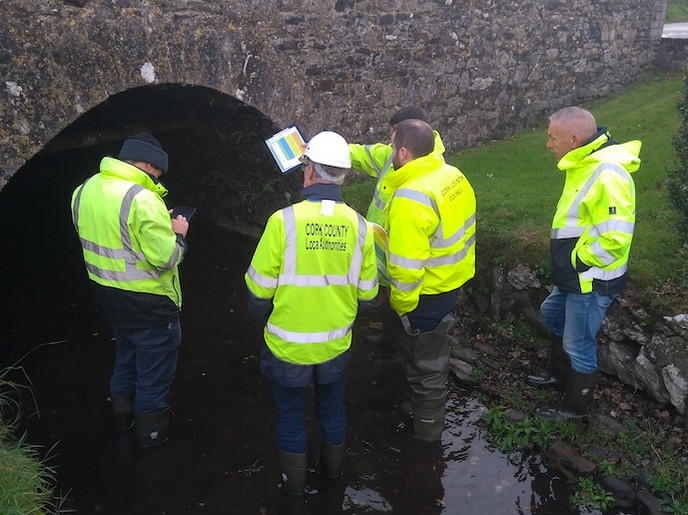Improved management, maintenance and safety for bridges
It is widely accepted that climate change will shift balanced water cycles, making flooding more frequent and so threaten bridge and transport infrastructure. Studies have shown that of all bridge hazards, hydraulic hazards (scour) are the biggest cause of bridge structure failure (partial or complete). An efficient and effective bridge management system involving monitoring and meteorological forecasting, means that engineers will be able to improve safety, reduce management costs and also be prepared well in advance for flood events. The BRIDGE SMS project developed an automated, open source, cloud-based, decision support and management tool, combining knowledge from hydrology and river engineering with that of industrial bridge management systems. With the protocols, architecture and communication channels in place and already piloted, the system is now ready for replication. The intelligent decision support system Bridge inspection, assessment and maintenance relies on a range of knowledge, including: structural engineering; geotechnics; hydraulics; hydrology; materials, and transport management. BRIDGE SMS, with EU Marie Curie IAPP project support, automated the combination of this knowledge to develop an intelligent decision support system for the assessment and management of the structural and hydraulic vulnerability of bridges over water. “A new standardised approach for bridge inspections will automate bridge inspection and reporting processes.” says project coordinator Dr Eamon McKeogh. “In combination with weather and flood forecasting this will allow bridge managers and site engineers to plan activities and reduce overall bridge management costs.” The new bridge inspection method incorporates several components for both structural and scour inspection of bridges. With the support of a dedicated tablet, bridges can be rapidly inspected, with the data collected on-site. The flood forecasting and early warning, combined with a low-cost Internet of Things system for weather and river monitoring, helps decision-makers take preparatory measures in advance of hazardous events. All the bridge’s information, such as geometry, photos and maintenance details, are combined and presented within a dedicated platform which consists of several modules such as Bridge Inventory and GIS layout. These can work independently and on separate servers, but all communicate with the central database and Bridge Inventory Module. The platform also enables access to historic, current and forecasted information, can import and export data, and can be linked with various external databases. The mobile inspection device is especially comprehensive, for addressing the problem of bridge scour – the removal of the river bed around the substructure and foundations due to fast flowing water. The forecasting system estimates flood discharges and the scour depth up to 10 days in advance of a flood event and uses an algorithm to combine this with bridge condition and foundation depth, to provide a vulnerability rating. These assessments have correlated well with manual inspections. The pilot was conducted on two river catchments in County Cork, Ireland and further testing of the system was carried out on bridges in Croatia and Portugal. The full product is nearly market ready, with certain customisation required for new users. “The new bridge inspection approach, tablet application and flood forecasting feature have especially attracted significant interest from relevant government institutions,” says Dr McKeogh. Two industry partners in Ireland and Portugal are already using first versions. Meanwhile, the team is still working to improve the product, with the University of Zagreb already setting up a new spin-off company.
Keywords
BRIDGE SMS, climate change, adaptation, mitigation, early warning, hydraulic hazards, scour, meteorological forecasting, structural engineering, hydrology, flooding



